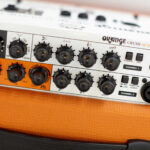Acoustic guitars are beloved for their rich, resonant sound, making them a popular choice for musicians across genres. But what exactly makes an acoustic guitar produce its distinctive tones? If you’re looking to Buy Acoustic Guitar, understanding the mechanics behind its sound can significantly help you make the right choice. Essentially, an acoustic guitar relies on its soundboard to amplify the vibrations of the strings, turning them into audible music.
The Magic of the Soundboard and Body
The heart of an acoustic guitar’s sound lies in its soundboard, which is typically the top of the guitar. This crucial component acts as a transducer, taking the energy from the vibrating strings and transferring it into the air as sound waves. Without the soundboard, the strings alone would produce a very faint sound, barely audible. The soundboard, being a large surface area, effectively pushes a larger volume of air, resulting in a much louder and fuller sound.
Furthermore, the hollow body of an acoustic guitar plays a vital role in sound production. It acts as a resonating chamber, amplifying and enriching the sound, especially in the lower frequencies, giving that characteristic warmth and depth we associate with acoustic guitars. The combination of the soundboard and resonant body is what creates the full, rich sound that makes you want to buy acoustic guitar.
Tonewoods and Construction: Shaping the Tone
The specific types of wood used, known as tonewoods, and the construction methods employed significantly impact the tonal qualities of an acoustic guitar. Different combinations of tonewoods for the soundboard, back, and sides, along with bracing patterns and bridge design, contribute to the unique sonic character of each guitar. This complex interplay of factors results in the diverse range of sounds you can find when you explore to buy acoustic guitar. Each guitar produces a complex mixture of harmonics, giving it a distinctive voice.
Acoustic guitars broadly fall into two main categories: steel-string acoustic guitars and classical guitars. Understanding the difference is important when you consider to buy acoustic guitar.
Steel-String Acoustic Guitars: Brightness and Volume
Steel-string acoustic guitars are a modern evolution of the guitar, descended from the classical guitar but designed to use steel strings. These strings create a brighter and louder sound compared to nylon strings. The dreadnought body shape, popularized by C.F. Martin & Company, is a very common and influential design in steel-string guitars. Its deep soundbox and wedge-shaped body contribute to a powerful and resonant tone. The Martin D-28, introduced in 1931, remains a legendary dreadnought model.
Beyond the dreadnought, other body styles like the larger jumbo, the mid-sized auditorium (000), and the smaller grand concert (00) offer different tonal nuances and playing experiences. For players seeking a smaller body with a focused sound, models like the Martin SC-13E Acoustic-Electric Guitar Natural are excellent options to consider when you buy acoustic guitar.
Classical Guitars: Warmth and Nuance
Classical guitars are rooted in the Spanish guitar tradition and are distinguished by their construction, size, materials, and the sound they produce. A key feature is the use of six nylon strings instead of steel strings. Classical guitars are typically characterized by a warmer, mellower tone, ideal for fingerstyle playing. While shapes and materials can vary, they generally adhere to either the modern classical guitar shape or historical designs like early romantic guitars. If you’re drawn to fingerpicking styles and a softer sound, exploring classical guitars is a great direction when you buy acoustic guitar.
Making Your Choice to Buy Acoustic Guitar
When you’re ready to buy acoustic guitar, understanding how these instruments create sound and the different types available empowers you to make a more informed decision. Whether you’re drawn to the bright projection of a steel-string or the warm tones of a classical guitar, exploring the nuances of soundboard construction, body styles, and tonewoods will guide you to the perfect acoustic guitar for your musical journey.

